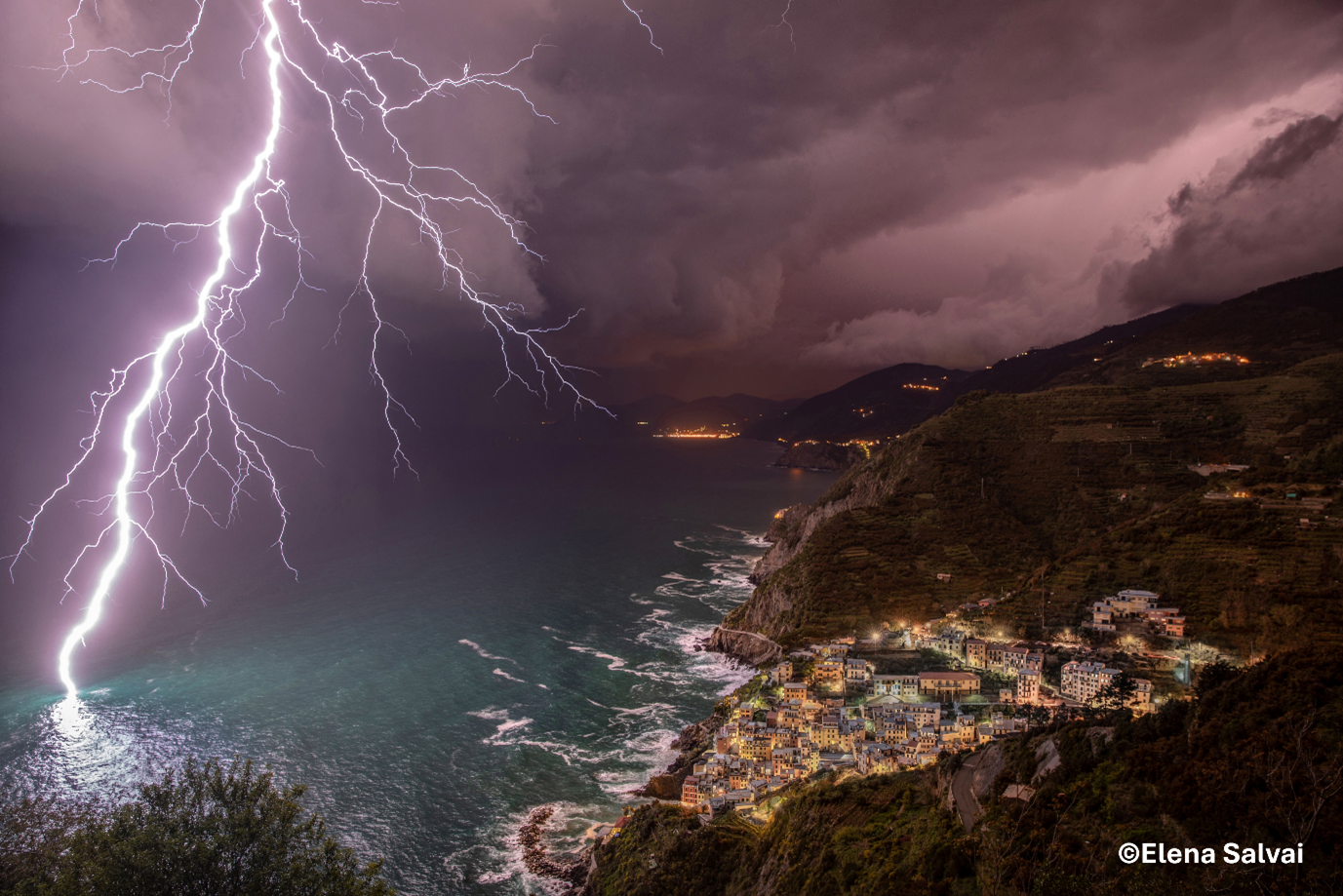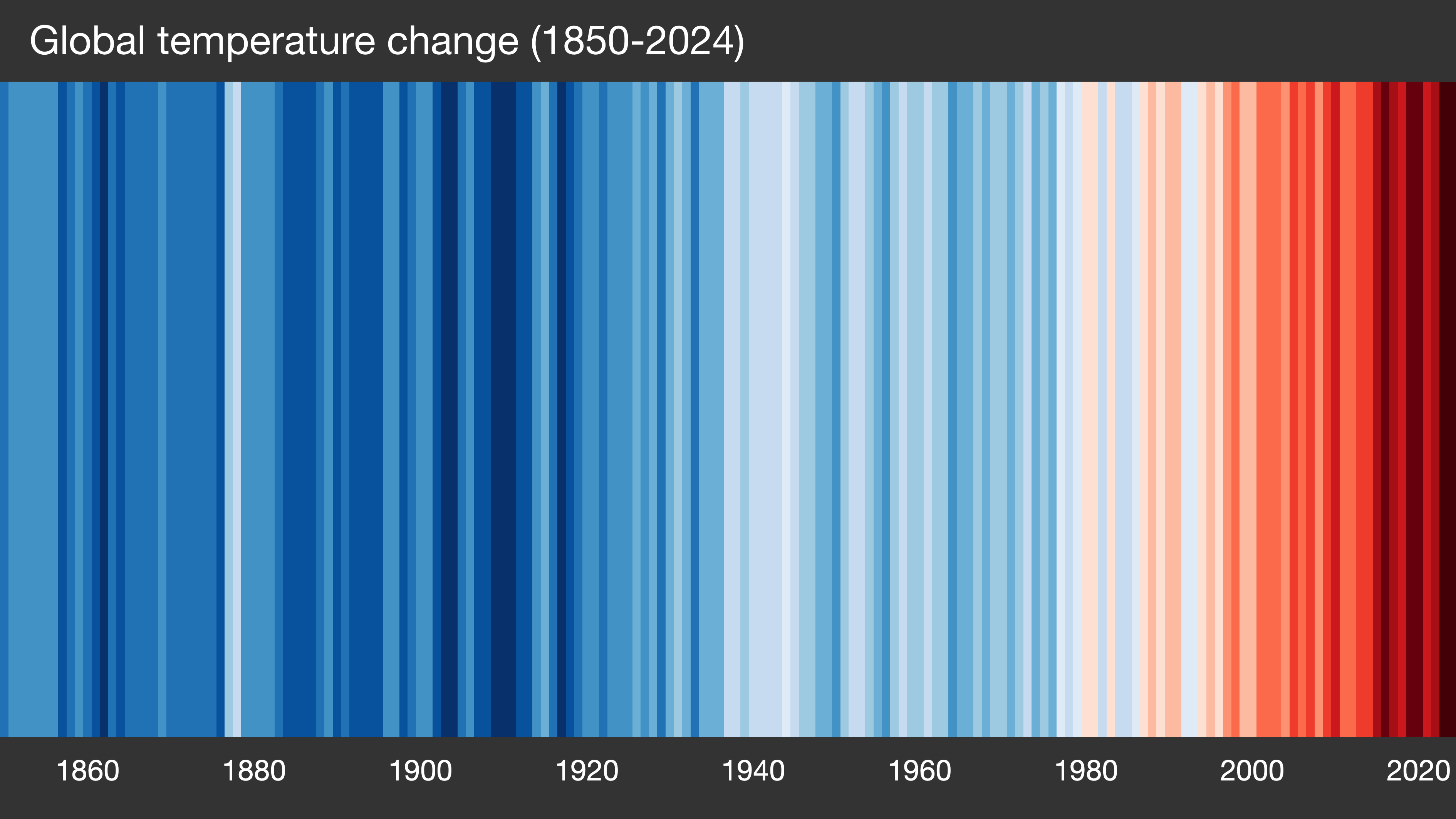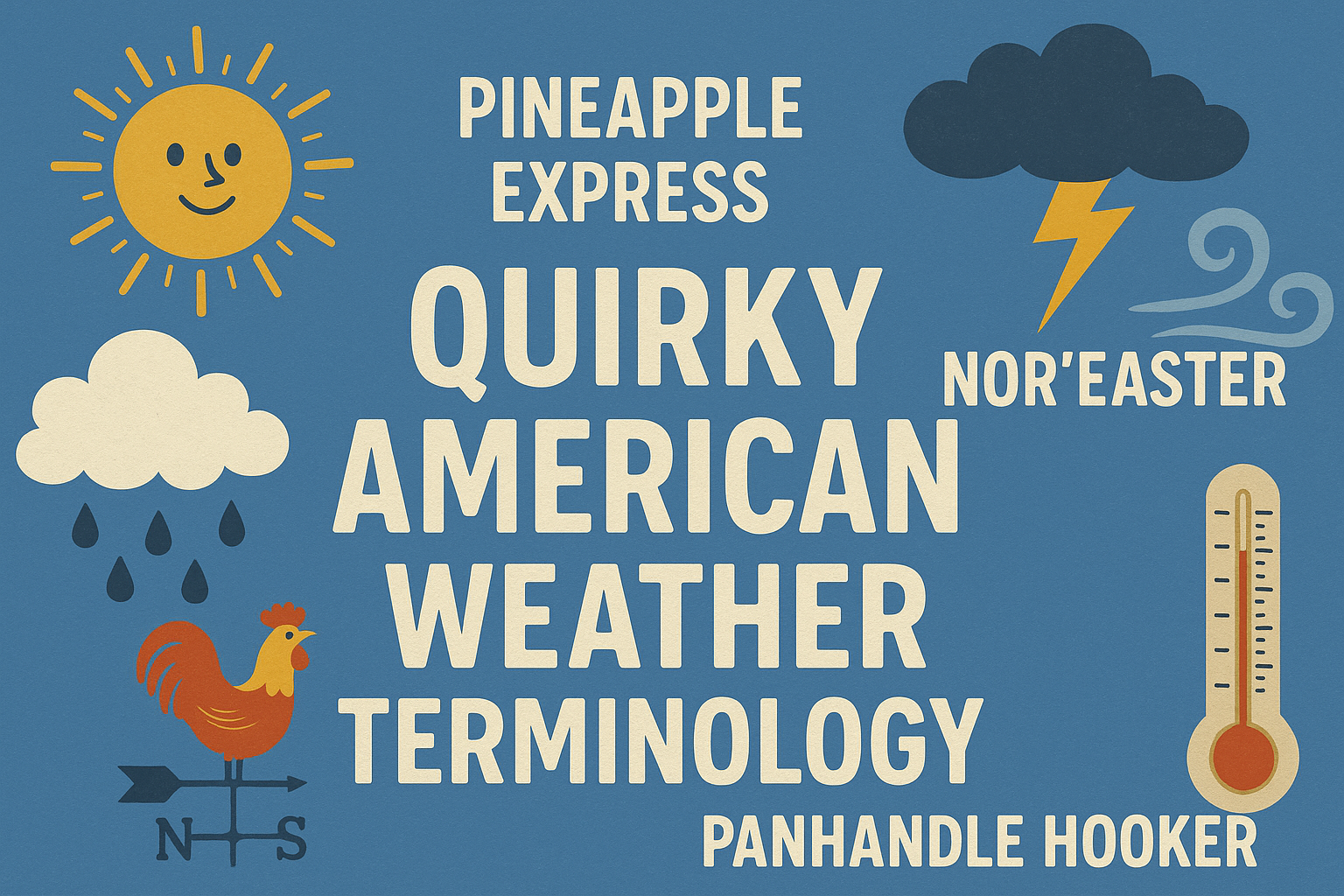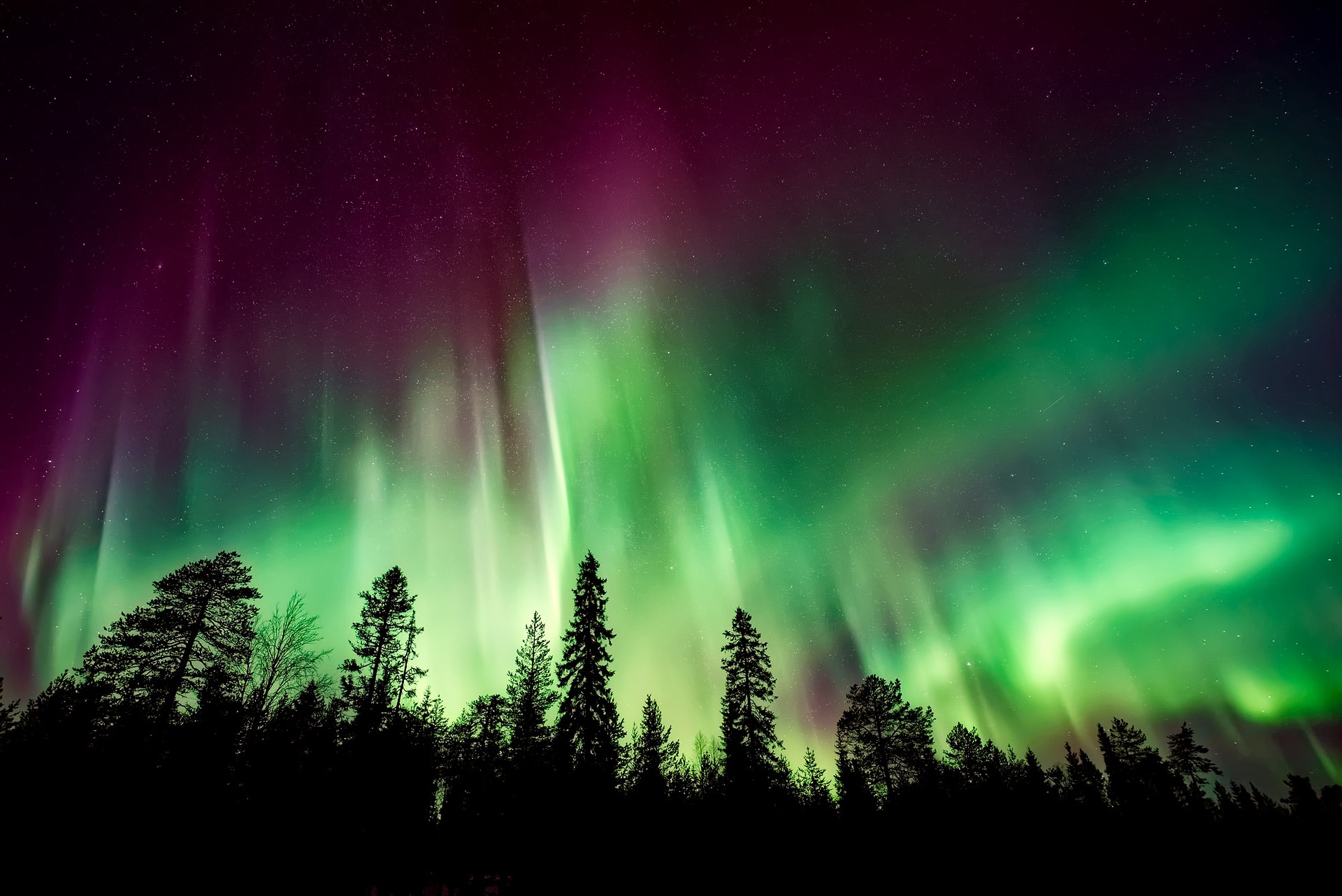

The Northern Lights
by Kirsty McCabe, FRMetS
Witnessing the northern lights flickering in the night sky is probably on most people’s wish list. And while more space weather than our usual earthly phenomena, you do need the right weather conditions to see them (namely clear skies!).
Back in the early 17th century, the Italian scientist Galileo Galilei christened these lights the aurora borealis. Aurora was the Roman goddess of dawn and Boreas was the Greek name for north wind. Their equivalent in the southern hemisphere are the aurora australis (southern lights).
These stunning displays of green, yellow, pink, violet, blue and red light are caused by bursts of solar wind colliding with the Earth’s magnetic field. Usually, our magnetic field deflects the stream of charged particles expelled from the outer layer of the Sun. But around the poles the field is weaker, so particles can get into the upper atmosphere and bump into gas molecules. When this happens, the gas molecule gains and then loses energy by releasing tiny flashes of light.
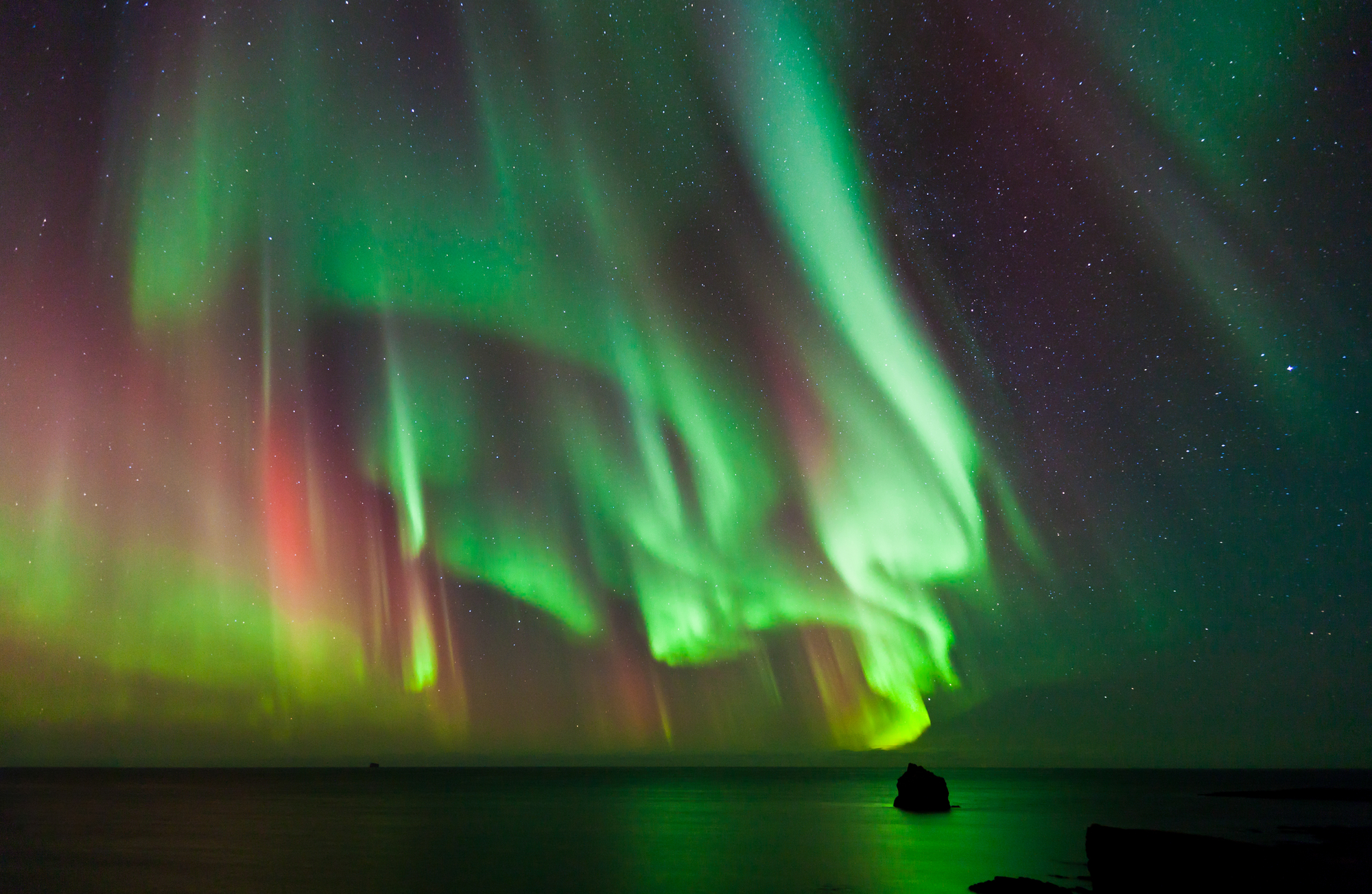
Each gas emits a particular colour of light, depending on where they are in the atmosphere, somewhere between 50 and 400 miles up. This is well above the troposphere, the lowest layer of our atmosphere where most of our weather occurs. Oxygen produces green light when it is hit 60 miles above the Earth, while at 100 to 200 miles it produces rare all-red auroras. Meanwhile nitrogen causes the sky to glow blue, yet when higher in the atmosphere it glows purple.
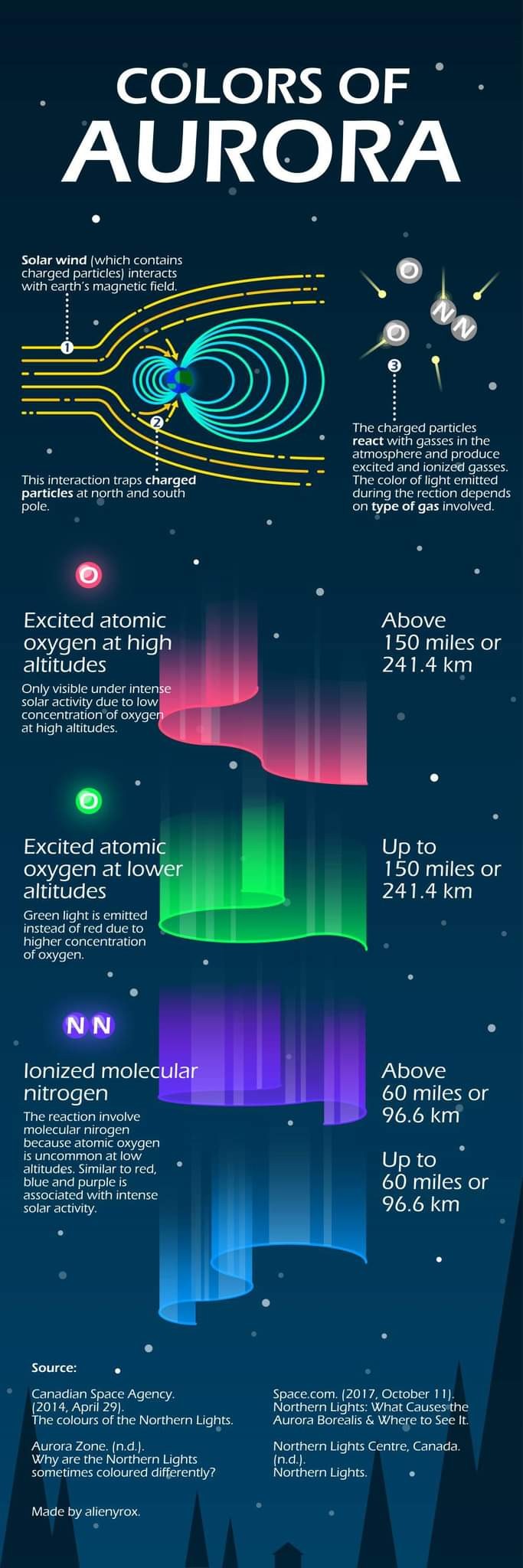
The frequency and intensity of the aurora increase when the Sun is more active. Auroras usually occur in a ring, or annulus, centred on the magnetic pole, so prime viewing spots in the northern hemisphere tend to be places such as Iceland, southern Greenland and northern parts of Finland, Norway, Canada and Alaska. However, events known as coronal mass ejections can cause the annulus to expand, bringing the aurorae to lower latitudes.
👀 Strong solar activity means another chance to see the #NorthernLights tonight
Northern Scotland is favoured to see the #Aurora overhead, but sightings closer to the horizon are possible as far south as southern Britain - *if* you have clear skies
Check out the forecast 👇 pic.twitter.com/2mMceWhrVt— Met Office (@metoffice) February 27, 2023
At the end of February 2023, magnetic disturbances in the sun’s upper atmosphere caused a huge expulsion of electrically charged particles. This huge coronal mass ejection and an especially high-speed solar wind meant the northern lights were spotted across the UK, as far south as Cornwall.
Last night the Northern Lights put on a fine display for my home town Denny 😁#NorthernLights #Auroraborealis #denny #falkirk #visitfalkirk #scotland #visitscotland #drone pic.twitter.com/RtEMWl3AdA
— Scotdrone (@scotdrone) February 27, 2023
The Northern Lights' red and green colors dazzled the night sky over eastern England's town of Swaffham pic.twitter.com/ncg5huMakR
— Reuters (@Reuters) February 27, 2023
Northern lights seen across the UK – in pictures https://t.co/U71sNEM2If
— The Guardian (@guardian) February 27, 2023
Solar activity follows an approximately 11-year cycle, with scientists predicting that solar activity will peak in 2024, leading to geomagnetic storms, and possibly more opportunites to spot the aurora.
In May 2024, a cluster of sunspots produced a series of strong solar flares that combined to form an extreme geomagnetic storm, the strongest in 20 years.
Extreme (G5) geomagnetic conditions have been observed! pic.twitter.com/qLsC8GbWus
— NOAA Space Weather Prediction Center (@NWSSWPC) May 10, 2024
This time the northern lights were visible across the UK and much of Europe, as far south as northern Italy. Elsewhere in the world, they were seen in the night sky as far south as Florida with reports from Cuba and Jamaica. And the southern hemisphere wasn't left out, with New Zealand, Australia and South Africa enjoying the aurora australis.
Strongest aurora in 20 years this evening.
This is the astounding view as far south as Switzerland a short while ago …on top of Jungfraujoch 😍😍
via https://t.co/XN8jh4HhE1 pic.twitter.com/kQMxGYa6LE— Matt Taylor (@MetMattTaylor) May 10, 2024
Did you see the northern lights last night? @kirstymccabe explains why they were so good and takes a peek at the rest of the weekend's weather pic.twitter.com/OIbUYFVV6O
— Sky News Weather (@SkyNewsWeather) May 11, 2024
The northern lights dancing in the sky as the crescent moon slowly set behind Bawden Rocks. An absolutely amazing thing to witness #timelapse #aurora #NorthernLights #NorthernLightsUK #StAgnes #Cornwall pic.twitter.com/ALuaMEtv0a
— Andrew Trenoweth (@KHK_Media) May 11, 2024
Around the spring and autumn equinoxes there is often an increase in occurrences of the aurorae. So here are my MetMatters top tips to spotting these elusive dancing lights.
Keep an eye out for strong solar activity
There are plenty of websites and apps that can help you monitor the sun’s activity, and even send you alerts when there is a high chance of spotting the northern lights from your location.
Red alert: aurora likely. Issued 2023-02-27 17:21 UTC by @aurorawatchuk. #aurora pic.twitter.com/ixhuIHTdP6
— AuroraWatch UK (@aurorawatchuk) February 27, 2023
Check the weather forecast
You need clear and dark skies and it’s best to avoid the light pollution of cities. Remember to wrap up warm as temperatures can fall fast on those cold, clear nights.
Bring a camera
Sometimes a camera, even the one on your smartphone, can record the northern lights, even if you can’t see much with the naked eye. Don't forget a tripod and set up a long exposure.
Look north!
Kind of obvious, but don’t forget to look towards the northern horizon, a north-facing coast is a great place to get a good view. Good luck!

